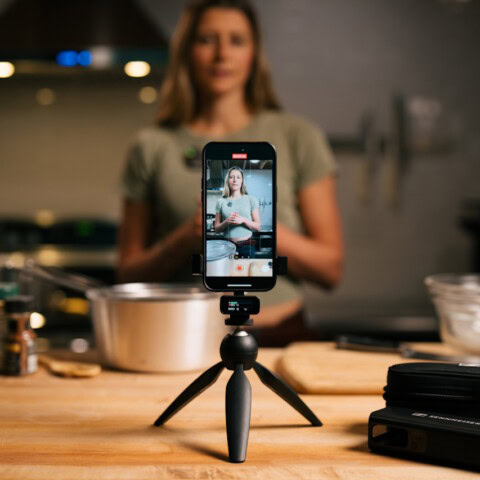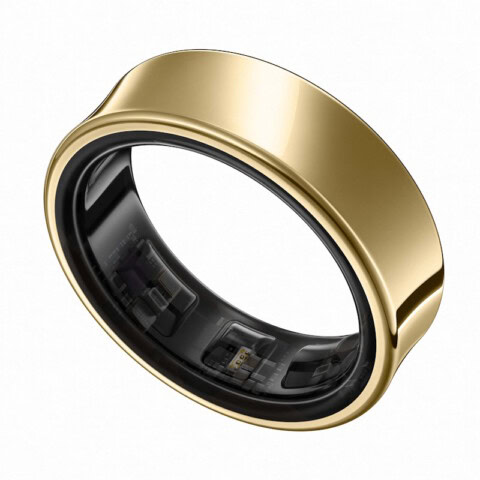Summary
JBL SoundGear Audio Frames
This might seem like a crazy idea but PAT PILCHER found that JBL’s sound-emitting sunglasses made for an ideal musical accompaniment to his holiday in the sun.
$199

 I’ve reviewed my fair share of ear gear over the years, but never a pair of audio glasses. They may sound like an audiophile oxymoron (I mean audio glasses?), but being able to stream audio through a pair of goggles proved surprisingly handy. Besides the obvious advantages of ear-friendly sunglasses (namely keeping the sun out of my peepers), how good are they?
I’ve reviewed my fair share of ear gear over the years, but never a pair of audio glasses. They may sound like an audiophile oxymoron (I mean audio glasses?), but being able to stream audio through a pair of goggles proved surprisingly handy. Besides the obvious advantages of ear-friendly sunglasses (namely keeping the sun out of my peepers), how good are they?
Looks-wise, they are a little Joe 90, but also kinda stylee. They might not sport wafer-thin frames like their big-brand designer vision-only counterparts, but their plastic body hides all the clever electronics needed to make them work as an earbud replacement. This comes in the form of JBL’s proprietary OpenSound technology, which is baked into the arms of the glasses to beam sweet music directly into my ears.
They sport a translucent design that gives them a nifty high-tech look and come in three different colourways – Onyx, Pearl, and Amber – and two different frame designs.
 Having audio supplied by glasses handily meant I didn’t have to worry about carrying, farting about with (and potentially losing) tiny earbuds or their equally petite charging case, freeing up scarce pocket space. Their lenses were clearly not an afterthought as they offered excellent visual clarity, screening out UV A/B and glare.
Having audio supplied by glasses handily meant I didn’t have to worry about carrying, farting about with (and potentially losing) tiny earbuds or their equally petite charging case, freeing up scarce pocket space. Their lenses were clearly not an afterthought as they offered excellent visual clarity, screening out UV A/B and glare.
The touch-sensitive controls used for skipping tracks, answering calls, and so on are built into the frame arms. JBL sensibly decided to give the touch control surfaces a slight recess, which is a welcome design choice as it makes finding the controls dead easy when wearing the frames.
Hewn out of thermoplastic, the SoundGear Frames are not only light but also super comfy. While holidaying in Australia, I wore them all day with no issues. Their plastic frames gave them enough flexibility to sit snugly on my mug without me feeling like my face had been clamped in a vice.
 If, like me, you have the eyesight of a marmoset with a serious whiskey habit, the good news is that the supplied lenses can be easily swapped out with prescription lenses. If you go down this route, I’d recommend opting for transition lenses, which darken as they encounter sunlight but remain blissfully transparent when out of the sun, allowing you to wear these wee optical gems all day.
If, like me, you have the eyesight of a marmoset with a serious whiskey habit, the good news is that the supplied lenses can be easily swapped out with prescription lenses. If you go down this route, I’d recommend opting for transition lenses, which darken as they encounter sunlight but remain blissfully transparent when out of the sun, allowing you to wear these wee optical gems all day.
JBL’s OpenSound technology delivers solid audio. While light on bass, the soundstage felt accurate, and their open ear design meant that sound enveloped me front, back, left and right while seamlessly blending into the sonic soundscape of my surroundings. Plenty of audio detail was there, but it would have been nice to have had a little more volume. Being an open ear design handily meant I could have music going while staying aware of my surroundings. In use, this meant that conversations and other activities requiring awareness of my environment didn’t require me to pluck anything out of my ears. The flipside of this is that others could faintly hear the music I was playing, and I found that loud noises nearby sometimes overwhelmed audio playback.
Also built in is a two-mic beamforming array with noise cancelling. This translated into clear phone calls, and even handier still, Google Gemini on my phone could hear me with no trouble at all.
 Having access to the Google Gemini assistant on my phone while wearing the frames proved insanely handy. Getting the weather, converting currency, or navigating to the nearest pizza joint was effortless, even if I sometimes got an odd look while I chatted away to Gemini.
Having access to the Google Gemini assistant on my phone while wearing the frames proved insanely handy. Getting the weather, converting currency, or navigating to the nearest pizza joint was effortless, even if I sometimes got an odd look while I chatted away to Gemini.
Wandering around on my holidays, I was impressed by how stable their Bluetooth connection was. I did not experience a single audio dropout, even in situations where there were large numbers of other people also using Bluetooth gear.
I had these wee beauts stuck on my face all day, largely thanks to their impressive 8-hour long run time. Even handier was that a 10-minute charge gave me another two hours of use.
After first charging them, I couldn’t find an off-switch, which left me worried that they’d run flat when put back into their bundled case. It turns out I need not have worried, as they switch on when their arms are opened and off when the arms are closed. It’s a small yet intuitive detail that I really came to appreciate.
Charging them up is an interesting exercise. JBL’s designers have made good use of the limited space on offer in a pair of sunglasses by having a set of batteries in each arm. This translates into a USB-C charging port in each arm, which is charged using a bundled split USB-C charging cable so you can charge both arms. While I haven’t tried it, charging each arm individually should theoretically be possible if you’re ever caught without the bundled split cable.
 The other bonus of the frames being JBL gear is that they use the rather splendid JBL Headphones mobile app (iOS/Android) for tweaking sound, customising gestures, and doing a swathe of other useful stuff. Having access to a 10-band EQ helped compensate for their lack of bottom-end.
The other bonus of the frames being JBL gear is that they use the rather splendid JBL Headphones mobile app (iOS/Android) for tweaking sound, customising gestures, and doing a swathe of other useful stuff. Having access to a 10-band EQ helped compensate for their lack of bottom-end.
So, just how good are the JBL SoundGear Audio Frames? While they don’t offer skull-shattering levels of bass, their audio is crisp and packed with plenty of detail while allowing the wearer to remain cognisant of their surroundings. As glasses, they also offered solid sun protection along with decent optics. With the supplied lenses able to be swapped out for prescription lenses, their utility as eyewear (and audio gear) is hard to fault. Sealing the deal is the fact that all this can be had for $199 – about what you’d typically pay for a pair of non-audio capable shades – which sees these wee gems getting a well-deserved Witchdoctor Gold seal of approval.
https://www.jbl.co.nz/jbl-wearables/audio-glasses















